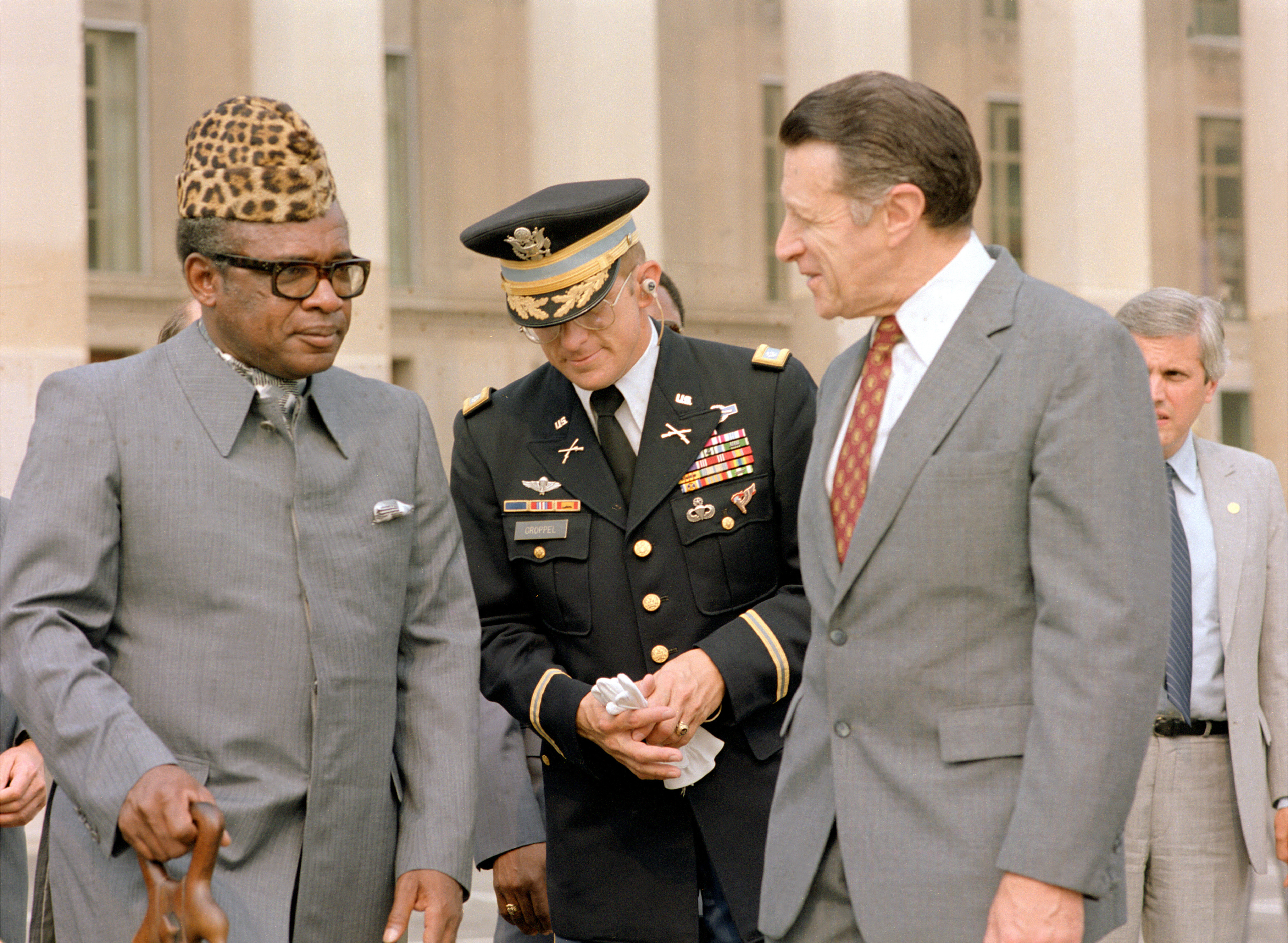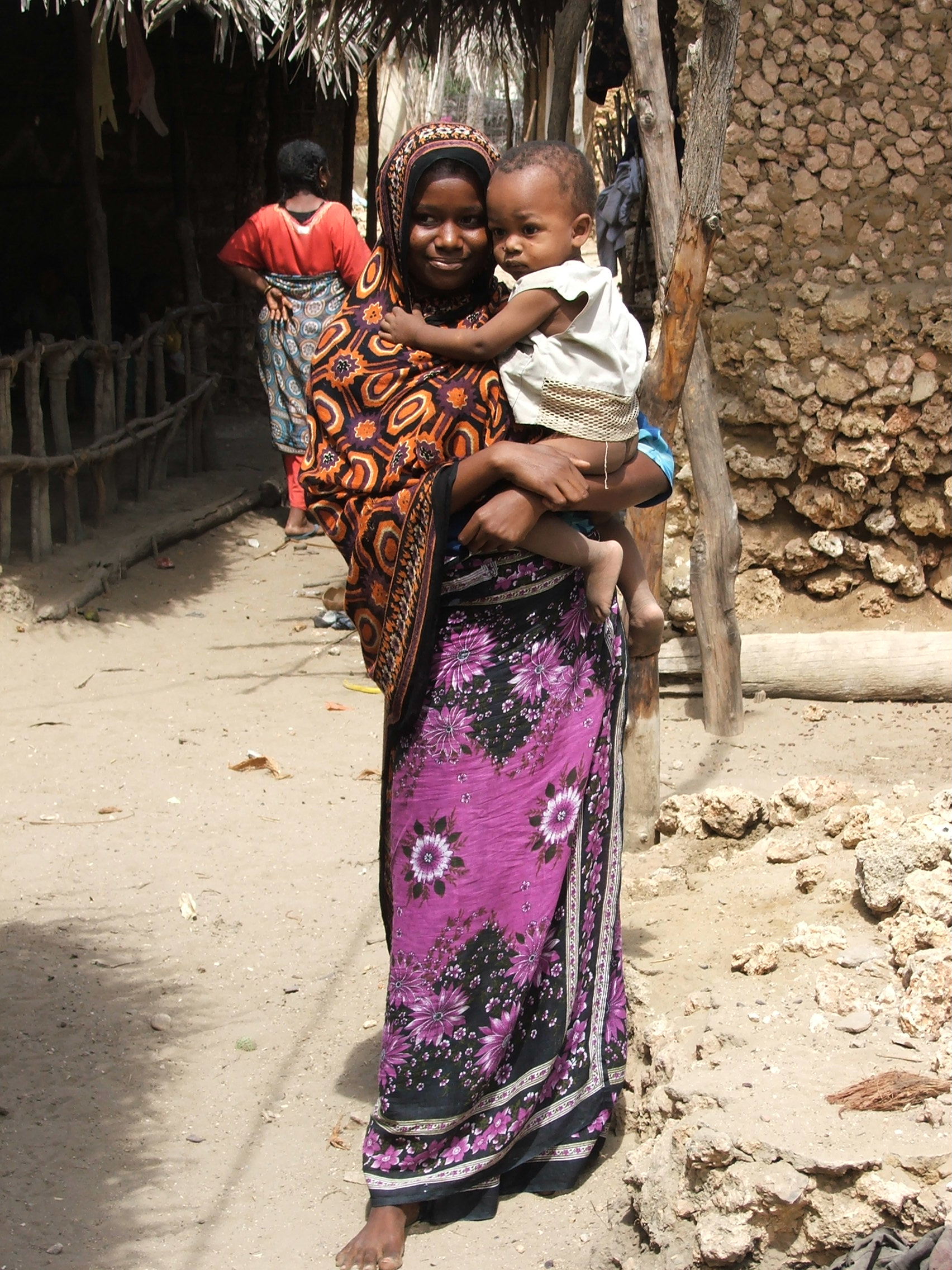|
Abacost
The abacost, a blending of the French ''"à bas le costume"'' (), was the distinctive clothing for men that was promoted by Mobutu Sese Seko as part of his '' authenticité'' programme in Zaire, between 1972 and 1990. Zairians were banned from wearing Western-style suits with shirt and tie to symbolise the break with their colonial past. The abacost was a lightweight suit, worn without a tie, though sometimes with a cravat. It closely resembled a Mao suit. It was seen in long-sleeved and short-sleeved versions. The abacost was seen as the uniform of Mobutu's supporters, especially those who had benefited from his regime. When Mobutu announced a transition to multiparty democracy in 1990, he said that the Western suit and tie would be allowed, but that he continued to favor the abacost and it would still be considered the national dress. Subsequently, when the transitional government was sworn in, all of the ministers were wearing abacosts. Arzoni in Zellik, Belgium produced ... [...More Info...] [...Related Items...] OR: [Wikipedia] [Google] [Baidu] |
Authenticité (Zaire)
''Authenticité'', sometimes Zairianisation in English, was an official state ideology of the regime of Mobutu Sese Seko that originated in the late 1960s and early 1970s in what was first the Democratic Republic of Congo, later renamed Zaire. The authenticity campaign was an effort to rid the country of the lingering vestiges of colonialism and the continuing influence of Western culture and to create a more centralized and singular national identity. The policy, as implemented, included numerous changes to the state and to private life, including the renaming of the Congo and its cities, as well as an eventual mandate that Zairians were to abandon their Christian names for more "authentic" ones. In addition, Western-style attire was banned and replaced with the Mao-style tunic labeled the " abacost" and its female equivalent. The policy began to wane in the late 1970s and had mostly been abandoned by 1990. Origin and general ideology Not long after Mobutu Sese Seko's declara ... [...More Info...] [...Related Items...] OR: [Wikipedia] [Google] [Baidu] |
Mobutu Sese Seko
Mobutu Sese Seko Kuku Ngbendu Wa Za Banga (; born Joseph-Désiré Mobutu; 14 October 1930 – 7 September 1997) was a Congolese politician and military officer who was the president of Zaire from 1965 to 1997 (known as the Democratic Republic of the Congo from 1965 to 1971). He also served as Chairman of the Organisation of African Unity from 1967 to 1968. During the Congo Crisis, Mobutu, serving as Chief of Staff of the Army and supported by Belgium and the United States, deposed the democratically elected government of left-wing nationalist Patrice Lumumba in 1960. Mobutu installed a government that arranged for Lumumba's execution in 1961, and continued to lead the country's armed forces until he took power directly in a second coup in 1965. To consolidate his power, he established the Popular Movement of the Revolution as the One-party state, sole legal political party in 1967, changed the Congo's name to ''Zaire'' in 1971, and his own name to Mobutu Sese Seko in 1972. Mobut ... [...More Info...] [...Related Items...] OR: [Wikipedia] [Google] [Baidu] |
Zaire
Zaire (, ), officially the Republic of Zaire (french: République du Zaïre, link=no, ), was a Congolese state from 1971 to 1997 in Central Africa that was previously and is now again known as the Democratic Republic of the Congo. Zaire was, by area, the third-largest country in Africa (after Sudan and Algeria), and the 11th-largest country in the world. With a population of over 23 million inhabitants, Zaire was the most-populous officially Francophone country in Africa, as well as one of the most populous in Africa. The country was a one-party totalitarian military dictatorship, run by Mobutu Sese Seko and his ruling Popular Movement of the Revolution party. Zaire was established following Mobutu's seizure of power in a military coup in 1965, following five years of political upheaval following independence from Belgium known as the Congo Crisis. Zaire had a strongly centralist constitution, and foreign assets were nationalized. The period is sometimes referred to ... [...More Info...] [...Related Items...] OR: [Wikipedia] [Google] [Baidu] |
HarperCollins
HarperCollins Publishers LLC is one of the Big Five English-language publishing companies, alongside Penguin Random House, Simon & Schuster, Hachette, and Macmillan. The company is headquartered in New York City and is a subsidiary of News Corp. The name is a combination of several publishing firm names: Harper & Row, an American publishing company acquired in 1987—whose own name was the result of an earlier merger of Harper & Brothers (founded in 1817) and Row, Peterson & Company—together with Scottish publishing company William Collins, Sons (founded in 1819), acquired in 1989. The worldwide CEO of HarperCollins is Brian Murray. HarperCollins has publishing groups in the United States, Canada, the United Kingdom, Australia, New Zealand, Brazil, India, and China. The company publishes many different imprints, both former independent publishing houses and new imprints. History Collins Harper Mergers and acquisitions Collins was bought by Rupert Murdoch's News Corpora ... [...More Info...] [...Related Items...] OR: [Wikipedia] [Google] [Baidu] |
Clothing In Politics
Clothing (also known as clothes, apparel, and attire) are items worn on the human body, body. Typically, clothing is made of fabrics or textiles, but over time it has included garments made from animal skin and other thin sheets of materials and natural products found in the environment, put together. The wearing of clothing is mostly restricted to human beings and is a feature of all human societies. The amount and type of clothing worn depends on gender, body type, social factors, and geographic considerations. Garments cover the body, footwear covers the feet, gloves cover the hands, while hats and headgear cover the head. Eyewear and jewelry are not generally considered items of clothing, but play an important role in fashion and clothing as costume. Clothing serves many purposes: it can serve as protection from the elements, rough surfaces, sharp stones, rash-causing plants, insect bites, by providing a barrier between the skin and the environment. Clothing can insulate a ... [...More Info...] [...Related Items...] OR: [Wikipedia] [Google] [Baidu] |
African Clothing
African clothing is the traditional clothing worn by the peoples of Africa. African clothing and fashion is a diverse topic that is able to provide a look into different African cultures. Clothing varies from brightly colored textiles, to abstractly embroidered robes, to colorful beaded bracelets and necklaces. Since Africa is such a large and diverse continent, traditional clothing differs throughout each country. For example, many countries in West Africa have a "distinct regional dress styles that are the products of long-standing textile crafts in weaving, dyeing, and printing", but these traditions are still able to coexist with western styles. A large contrast in African fashion is between rural and urban societies. Urban societies typically are exposed more to trade and the changing world, while it takes more time for new western trends to get to rural areas. By region In Northeastern Africa, particularly in Egypt, styles of traditional women's clothing have been influe ... [...More Info...] [...Related Items...] OR: [Wikipedia] [Google] [Baidu] |
Madiba Shirt
A Madiba shirt is a loose-fitting silk shirt, usually adorned in a bright and colourful print. It became known in the 1990s, when Nelson Mandela—then elected President of South Africa—added the item to his regular attire. Mandela popularised this type of shirt, elevating the seemingly casual garment to formal situations. Design A form of casual wear, Madiba shirts are loose-fitting, usually worn without a necktie and untucked from trousers. It is adapted from Indonesian clothing, and generally made of cotton or silk patterned with vivid colours. Mandela was said to prefer earthier tones for the shirt, though Madiba shirts with bright colors have endured in popularity. History Yusuf Surtee, a clothing-store owner who supplied Mandela with outfits for decades, said the Madiba design is based on Mandela's request for a shirt like Indonesian president Suharto's attire. Fashion designer Desré Buirski presented this type of shirt (and her contact information) to Mandela as a gi ... [...More Info...] [...Related Items...] OR: [Wikipedia] [Google] [Baidu] |
Nehru Jacket
The Nehru jacket is a hip-length tailored coat for men or women, with a mandarin collar, and with its front modelled on the Indian achkan or sherwani, a garment worn by Jawaharlal Nehru, the prime minister of India from 1947 to 1964. History The Nehru jacket is a variation of the Jodhpuri where the material is often khadi (hand-woven cloth). The Jodhpuri itself is an evolution from the Angarkha. Popularized during the terms of Jawaharlal Nehru, these distinct Bandhgalas made from khadi remain popular to this day. Style Unlike the achkan, which falls somewhere below the knees of the wearer, the Nehru jacket is shorter. Jawaharlal Nehru, notably, never wore this type of Nehru jacket. Popularity The jacket began to be marketed as the ''Nehru jacket'' in Europe and America in the mid 1960s. It was briefly popular there in the late 1960s and early 1970s, its popularity spurred by the aspirational class' growing awareness of foreign cultures, by the minimalism of the Mod li ... [...More Info...] [...Related Items...] OR: [Wikipedia] [Google] [Baidu] |
Kariba Suit
A Kariba or Kareeba suit is a two-piece suit for men created by Jamaican designer Ivy Ralph, mother of Sheryl Lee Ralph, in the early 1970s to be worn on business and formal occasions as a Caribbean replacement for the European-style suit and a visual symbol of decolonisation. The suit was popularised by Michael Manley, the leader of the People's National Party (PNP). The style of the jacket is considered a formalised version of a safari jacket or bush shirt common in Africa, worn without a shirt and tie, making it more comfortable clothing for a tropical climate. After PNP came to power in Jamaica in 1972, the Parliament passed a law recognising that the Kariba suit was appropriate for official functions and Manley, by now Prime Minister, wore a "fancy black one" when he met Queen Elizabeth II. Member's of Manley's political party, PNP, became recognizable by their adoption of the Kariba suit, rather than a western suit and tie favoured the opposition party JLP. The Kariba ... [...More Info...] [...Related Items...] OR: [Wikipedia] [Google] [Baidu] |
First Congo War
The First Congo War, group=lower-alpha (1996–1997), also nicknamed Africa's First World War, was a civil war and international military conflict which took place mostly in Zaire (present-day Democratic Republic of the Congo), with major spillovers into Sudan and Uganda. The conflict culminated in a foreign invasion that replaced Zairean president Mobutu Sese Seko with the rebel leader Laurent-Désiré Kabila. Kabila's uneasy government subsequently came into conflict with his allies, setting the stage for the Second Congo War in 1998–2003. Following years of internal strife, dictatorship and economic decline, Zaire was a dying state by 1996. The eastern parts of the country had been destabilized due to the Rwandan genocide which had perforated its borders, as well as long-lasting regional conflicts and resentments left unresolved since the Congo Crisis. In many areas state authority had in all but name collapsed, with infighting militias, warlords, and rebel groups (some sy ... [...More Info...] [...Related Items...] OR: [Wikipedia] [Google] [Baidu] |








